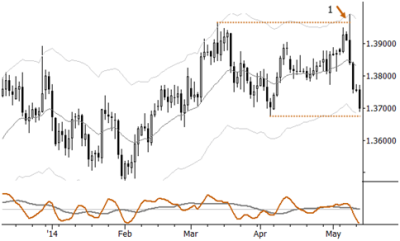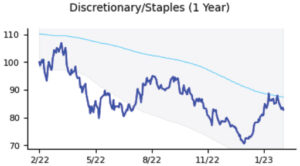
[dc]T[/dc]he chart above is a daily chart of the EURUSD. I’ve written before about some of the challenges with using technical analysis in currencies—it’s not that it can’t be done, but it does require, in my opinion, a slightly different mindset. Currencies are driven by supply and demand for each currency in the pair, but this supply and demand may itself be secondary to more primary economic pressures (trade balance, interest rates, etc.) Currencies also trade a bit differently than many other markets. This is an important understanding and flies in the face of the claims of traditional technical analysis, that you can apply any tool to any chart and use it with no changes. My work suggests that short-term mean reversion in currencies is muted, as is longer-term momentum, leading to a slightly more challenging trading environment compared to equities or commodities.
Regardless, even in this challenging environment, simple tools and patterns do work. Last week, the EURUSD put in a clean failure test at the top, and followthrough from the pattern has now brought the Euro the bottom of the range. What now? That’s the question. (Note: prudent trade management virtually requires that you will already have covered some of the short if you shorted based on this pattern.) Watch for a possible failure test against the bottom of the range, which could be an entry into the weekly consolidation (leading to more upside) or for downside continuation below the bottom of the range. It’s not so much about predicting what will happen (though patterns can sometimes identify spots where the probabilities are tilted in one direction or another) as much as it is about having a gameplan and being able to make intelligent decisions as market action unfolds in the future.
